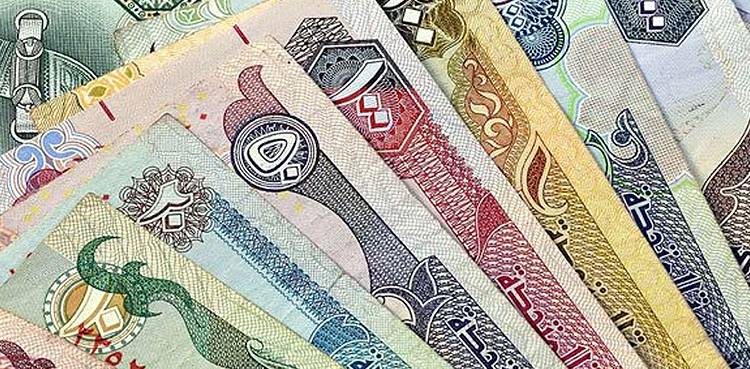Karachi, June 23, 2025 — The UAE Dirham (AED) has remained stable at 77.21 Pakistani Rupees (PKR) in today’s foreign exchange market, holding steady from the closing rate of last week.
This stability comes after a notable upward trend throughout the month, during which the AED climbed from 76.44 PKR to 77.21 PKR, marking a significant gain of nearly **+1%** against the Pakistani currency.
1 UAE Dirham= 77.21 Pakistani Rupee
Valuation Mechanism and Market Dynamics
The value of the UAE Dirham is primarily influenced by its peg to the US Dollar (USD), as the AED has been historically tied to the greenback at a fixed rate of 1 USD = 3.6725 AED. Since the USD itself has shown strength against emerging market currencies—including the PKR—this indirectly contributes to the AED’s appreciation.
Pakistan’s local forex markets are also sensitive to external factors such as inflationary pressures, balance of payments challenges, and foreign remittances. With the PKR facing persistent depreciation due to ongoing economic volatility, the AED has gained relative strength, especially among expatriate communities sending money back home from the Gulf region.
Impact on Remittances and Trade
The strengthening of the AED against the PKR has had a positive impact on overseas Pakistani workers, particularly those based in the United Arab Emirates—the top destination for Pakistani expats. Higher Dirham valuations translate into increased purchasing power when converting savings into rupees, providing much-needed relief to families reliant on these inflows.
On the trade front, however, the stronger AED makes Pakistani exports slightly more expensive for Emirati importers, though this effect is mitigated by the relatively small size of bilateral trade volumes compared to other Gulf partners like Saudi Arabia.
Currency Rates in Pakistan Today
UAE’s Economic Policies: A Pillar of Stability
The sustained strength of the UAE Dirham reflects the United Arab Emirates’ prudent economic policies, including fiscal discipline, robust foreign exchange reserves, and strategic diversification away from oil dependency. Over the past decade, the UAE has implemented structural reforms, attracted foreign investment, and strengthened its financial sector—factors that have bolstered confidence in the Dirham.
In contrast, Pakistan continues to navigate macroeconomic adjustments under the guidance of the International Monetary Fund (IMF), with the central bank actively managing inflation and exchange rate volatility.
Brief Overview of AED and PKR
UAE Dirham (AED): Introduced in 1973, the Dirham is subdivided into 100 fils or 1,000 decimal units known as dirham coins. It is issued by the Central Bank of the UAE and maintains a stable peg to the US Dollar, ensuring predictability in international transactions.
Pakistani Rupee (PKR): The national currency of Pakistan, the rupee, has undergone several devaluations over the years due to economic challenges, high inflation, and geopolitical uncertainties. It is subdivided into 100 paisa or 1,000 halalah, though no smaller denominations are currently used.
The UAE Dirham’s recent rise and current stability reflect both regional economic resilience and broader global currency trends. For Pakistan, the evolving dynamics between the AED and PKR underscore the importance of maintaining macroeconomic stability and enhancing remittance channels to support household incomes and national development goals.


Leave a Comment